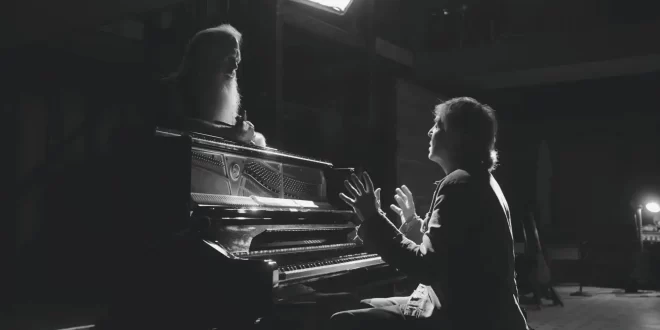When most people hear the name Paul McCartney, they immediately think of The Beatles, Hey Jude, and the electric energy of rock and pop music. However, beyond the iconic basslines and unforgettable melodies lies another passion that has deeply influenced McCartney’s artistic life: classical music. Over the decades, McCartney has not only immersed himself in the world of symphonies and orchestras but has also created a body of work that merges his pop sensibilities with the grandeur of classical composition.
From Rock Legend to Classical Composer
Paul McCartney’s journey into classical music was not an overnight shift. While his public identity was tied to pop and rock, McCartney’s fascination with orchestral arrangements began during his Beatles years. Tracks like Eleanor Rigby, A Day in the Life, and She’s Leaving Home showcased lush string arrangements that hinted at his growing appreciation for classical textures.
McCartney often credited his father, Jim McCartney, for instilling in him an early appreciation of melody and structured composition. This foundation would later inspire him to experiment with orchestration on a much grander scale.
Standing Stone – A Celtic Symphony of Stories
One of McCartney’s most ambitious classical projects is Standing Stone (1997). Commissioned for EMI’s centenary celebration, this 75-minute symphonic poem is a deep dive into storytelling through music. Inspired by Celtic history, myths, and personal reflection, Standing Stone blends traditional orchestral arrangements with McCartney’s unmistakable melodic flair.
The work was recorded by the London Symphony Orchestra and featured the London Voices choir. Critics noted that McCartney’s approach to classical composition was unique — instead of following strict academic rules, he infused his music with a sense of accessibility that made it appealing to both classical enthusiasts and pop fans.
Liverpool Oratorio – A Personal Memoir in Music
In 1991, McCartney premiered the Liverpool Oratorio, a piece that would mark his first major step into the classical world. Written in collaboration with American composer Carl Davis, this eight-movement work is a semi-autobiographical reflection on McCartney’s life in Liverpool, his upbringing, and his journey into adulthood.
Performed by the Royal Liverpool Philharmonic Orchestra, the oratorio was a huge commercial success, topping classical charts despite mixed critical reviews. For McCartney, however, the project was more than just an experiment — it was a statement that his musical storytelling could transcend genres.
Ecce Cor Meum – A Work of Heart
Perhaps McCartney’s most emotionally charged classical work, Ecce Cor Meum (Behold My Heart), was released in 2006. Dedicated to the memory of his late wife, Linda McCartney, the piece took nearly eight years to complete. Combining choral grandeur with tender melodies, Ecce Cor Meum is a deeply personal meditation on love, loss, and hope.
The album went on to win the Best Album at the Classical BRIT Awards in 2007, cementing McCartney’s credibility as a composer in the classical arena.
Ocean’s Kingdom – Ballet Meets McCartney
In 2011, McCartney made his first foray into ballet music with Ocean’s Kingdom, composed for the New York City Ballet. Unlike his earlier choral and orchestral works, this score focused on movement and narrative within a purely instrumental context. The piece tells a romantic tale of an underwater kingdom, showcasing McCartney’s ability to adapt his composition style to a completely different art form.
Why Classical Music Captivates McCartney
McCartney has often spoken about how classical music allows him to explore emotions and narratives in ways pop music cannot. Without the constraints of three-minute radio singles, he can build longer, more complex musical journeys. His works often blend accessible melodies with grand, cinematic arrangements, bridging the gap between popular and classical audiences.
Critical Reception and Lasting Influence
While some critics initially questioned whether a rock musician could “seriously” compose classical works, McCartney’s persistence and dedication silenced many skeptics. Over the years, he has been praised for introducing classical music to listeners who might never have engaged with it otherwise.
His symphonic works have also inspired other popular musicians to experiment with orchestral arrangements, helping break down the traditional barriers between genres.
Paul McCartney’s Legacy in the Classical World
Today, Paul McCartney’s contributions to classical music stand as a testament to his creative versatility. From the Liverpool Oratorio to Standing Stone, Ecce Cor Meum, and Ocean’s Kingdom, he has proven that his artistry extends far beyond the realm of pop.
McCartney’s classical projects are not just side notes in his career; they are full-fledged artistic achievements that enrich his already legendary status. For fans, they offer a deeper look into the mind of a man who refuses to be confined by labels — a true musical chameleon.
Final Thoughts
Paul McCartney’s obsession with classical music is a reminder that true artistry knows no boundaries. His symphonic works stand as a bridge between the pop stage and the concert hall, inviting audiences from all walks of life to experience the emotional power of orchestral storytelling.
For anyone looking to explore a different side of McCartney’s genius, his classical albums are a journey worth taking — a symphony of creativity from one of the most iconic musicians of all time.






